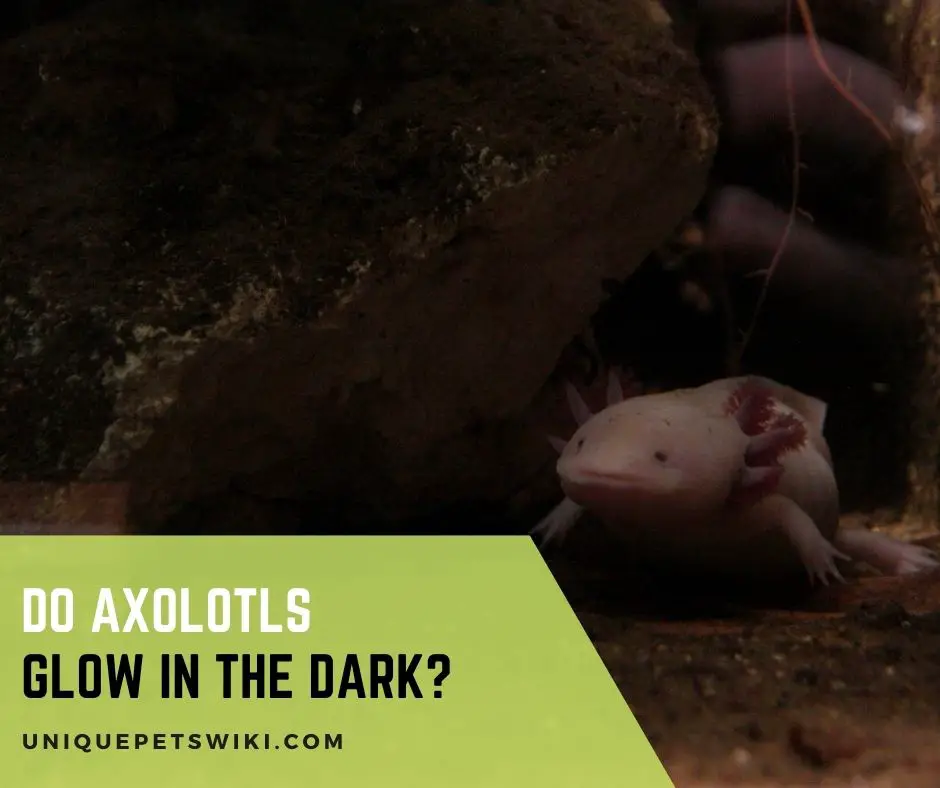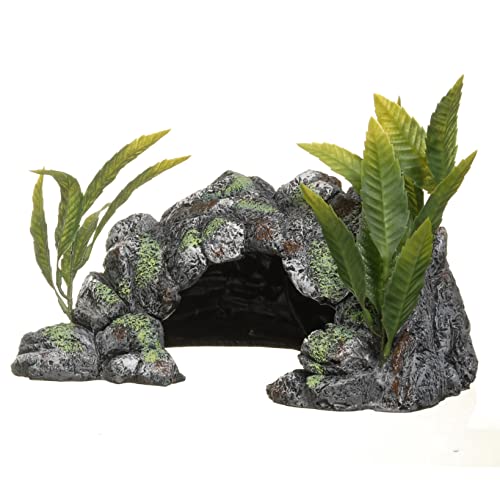The interest in axolotls as pets is growing and more and more people are looking to buy the exotic and cute ‘Mexican Walking Fish’.
A question many potential axolotl owners ask on axolotl forums is: ‘Do axolotls glow in the dark?’
The fact is that some Axolotls do glow under certain circumstances, but only if they have special genetics.
In this guide, we are going to answer the question: “Do axolotls glow in the dark?’ and if yes, what causes this special phenomenon.
Contents
Do Axolotls Glow In The Dark?
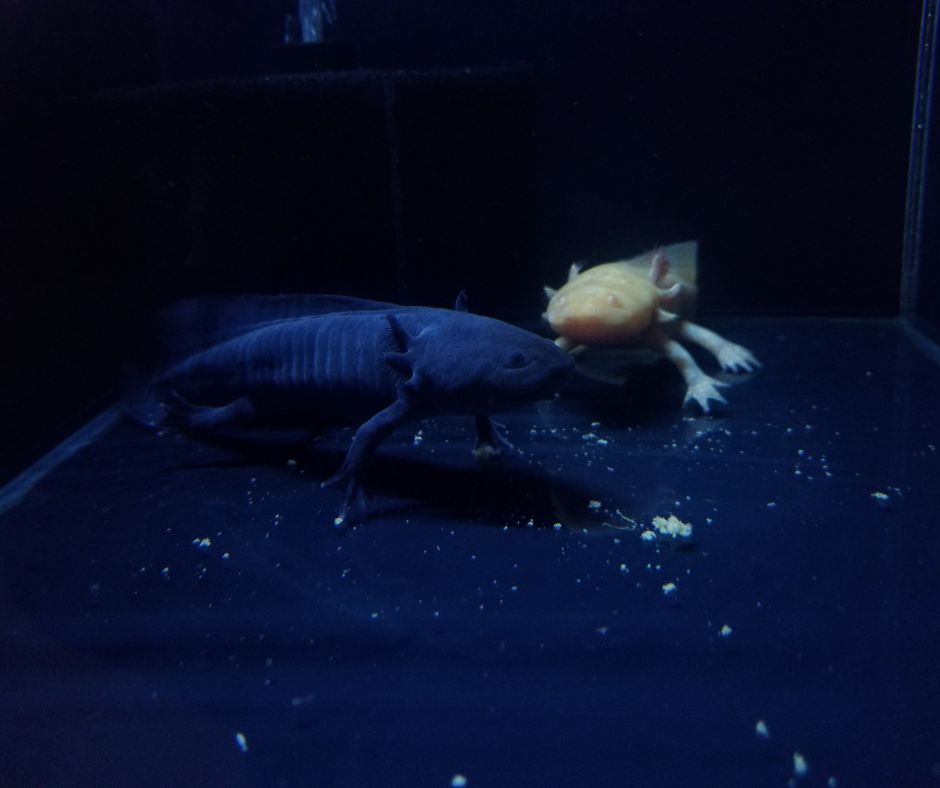
There are many types and colors of axolotls available these days. You can get axolotls in almost 20 different colors.
Naturally, all axolotl owners want their pets to look unique and search for the mystical “glow-in-the-dark” varieties.
However, it may surprise and even disappoint many of you to know that axolotls do not glow in the dark.
Some axolotls do glow in ‘blue/black light’ or UV light but only if they have the GFP gene. The GFP gene is the green fluorescent protein.
This protein contains 238 amino acids of which three acids emit visible fluorescent green light. The result: axies with this gene could glow under certain circumstances
Scientists first studied the green fluorescent protein in jellyfish Aequorea Victoria. The protein enabled certain varieties of jellyfish to display bioluminescence in the dark.
Scientists then cloned this gene in the lab to use it as a molecular biomarker to study limb regeneration in newts and salamanders (ancestors of axolotls). Thus was born the GFP axolotl.
Bottomline: the axolotls that glow under blue/black light or UV light are usually developed in labs or have descended from lab-developed axolotls and known to carry the green fluorescent protein gene.
Why Do Axolotls Glow Under UV light?
As mentioned above, axolotls with the GFP gene glow under UV light or black light. Sometimes, GFP axolotls are born with greenish eyes and you can see them under natural light too.
The simple reason behind this is that the GF protein absorbs the ultraviolet light and reflects it back as a lower-energy greenish light.
As mentioned before, the GFP gene was first studied in jellyfish. Scientists then managed to clone it and introduced it into the axolotl genome.
Therefore, only the lab-developed axolotls with the GFP gene and their descendents which inherit the protein can glow in black light or UV light. They will not glow independently.
If you want to show off your “glowing” axolotl to your friends, you need to buy UV light or blacklight.
Remember: constant exposure to UV light is bad for your pet. So do not keep the light turned on all the time. Show your pet and turn off the light right away.
What is a GFP Axolotl?
An axolotl that has the GFP gene is known as a GFP axolotl. These days, one can inject the isolated protein into non GFP axolotls as well.
Let us understand why humans are creating these lab-axolotls and the purpose behind it.
The Origin of the GFP Axolotl
Scientists have always been fascinated by salamanders and newts for their unique ability to regenerate lost limbs and organs.
Axolotls can also regrow some of their limbs and organs damaged due to disease, injury, or fight.
Scientists wish to extend the same process to help humans that have lost limbs to disease or accident.
They want a better understanding of the biological technique axolotls use for the regrowth process so they can extend the same to help accident victims, war veterans, cancer patients, and amputees.
For this purpose, in 2005, Elly M Tanaka of Max Planck Institute created GFP axolotls so they could study the regrowing process.
Tanaka and team injected GFP protein of jellyfish into a mutant axolotl that lacked skin pigment and had clear skin.
The green protein markers helped the team see how the group of cells behaved at the site of lost limb/wound and grew into an entire limb.
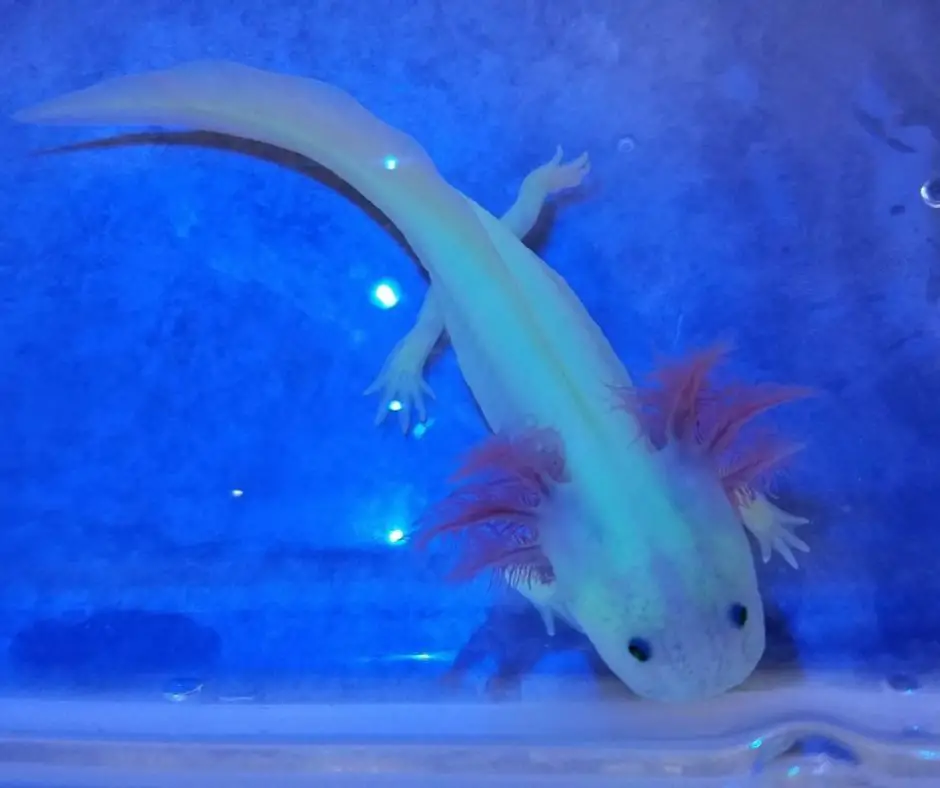
Axolotl Breeding
Axolotls that have the GFP gene also pass the protein to their offspring. Breeders have specifically started breeding such axolotls since they are very much in demand.
Many pet shops in the UK and US sell such glowing axolotls. Some of these axolotls have green eyes and clear bodies that seem to glow even under natural light.
Under UV or blacklight, the glow is even more pronounced.
Are GFP Axolotls Healthy and Normal?
There is nothing right or wrong or good or bad about glowing axolotls. They are just ‘bred’ that way and naturally carry the GFP gene.
It isn’t harmful that they have the GF protein in them and they won’t go on to develop any health issues. GFP axolotls should be perfectly healthy as long as you take good care of them.
What Do GFP Axolotls Look Like?
Glowing axolotls look like normal axolotls under normal light. However, some ‘glowing’ axolotls tend to have greenish pupils that are seen under natural light too.
Some have a streak of green on their bellies and that seems to glow even under normal light.
However, most GFP axolotls will glow bright green only under UV- light. You can buy UVlight from hardware stores.
However, please avoid prolonged exposure of your axolotl to UV light because – just as in humans – it could harm your pet.
Understanding Axolotl Morphs
As mentioned earlier, breeders are selectively breeding axolotls to produce beautiful colors.
These are known as axolotl morphs. To understand axolotl morphs and their colors, we need an understanding of axolotl genetics.
Axolotls basically have three kinds of pigment cells in their skin. These cells are known as chromatophores and the three types of chromatophores produce the different colors.
For example, “melanophore” is responsible for blackish brown color, “Xanthophore ” creates yellowish red color, and “Iridophore ” creates a shiny iridescence.
A baby axolotl’s color will depend on the genes it inherits from either parent. These genes, in turn, contain sections called alleles which can be compared to a “code”.
This code determines which of the three chromatophores it inherits: the melanophore, Xanthophore, or the Iridophore.
The combination of alleles thus decides the quantity of each chromatophore. To state in layman’s terms: it helps decide which color an axolotl will develop.
For example, to create an albino or leucistic axolotl, breeders need to breed two albino axolotls as two combinations of albino alleles are a must in this case.
As can be seen, axolotl morphs and selective breeding requires a lot of study and patience. As more and more breeders are entering into the field, new morphs are still being discovered today.
Green fluorescent protein axolotls look like any morphs but they glow green under UV light. The axolotls having lighter skin (albinos and leucistic) tend to glow even brighter.
Are GFP Axolotls Healthy? What Special Care do They Need?
Yes, GFP axolotls are as healthy as any other axolotls. The GFP gene isn’t harmful and won’t lead to any health issues in your pet.
GFP axolotls can be cared for in much the same way as any other axolotl. They do not need any special diet or environment.
How Much do GFP Axolotls Cost?
Some pet shops charge more for GFP axolotls compared to other common colors. In most places though, you might be able to buy them for $35 to $70. Some GFPs have even been sold for just $25.
Aquatic pet shops like this one are known to charge higher for exotic colors- almost between $100 and $150 for a single green glowing axolotl.
Thus, there is no standardization in prices for GFP axolotls, so you just need to keep an eye for good deals.
You can do so by joining axolotl forums or through word of mouth from other axolotl aficionados.
Also read: How Much Does Axolotl Cost?
Are Glowing Axolotls Rare?
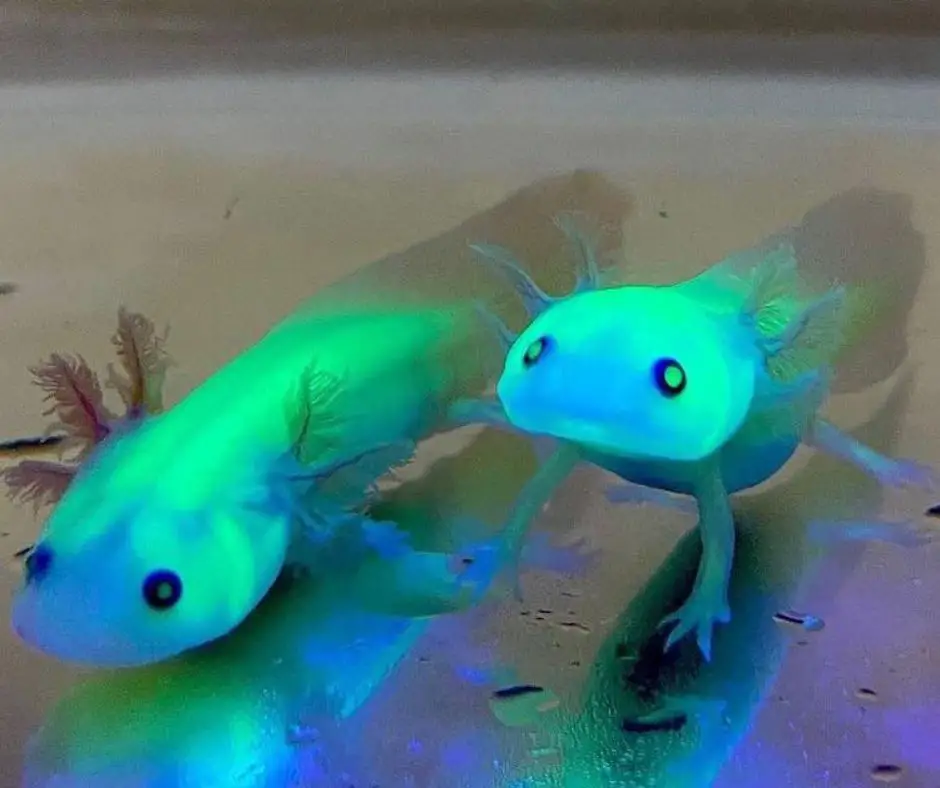
GFP or glowing axolotls are not too rare since many breeders are using their knowledge of axolotl genetics to create axolotls in beautiful colors.
However, there is still a lot that we need to understand about lab-modified Axolotls.
Some pet shops sell axolotls that have the GFP protein. However, before you buy one, make sure to check if it really glows under UV light. You certainly do not want to be taken for a ride.
Here are some reliable places to find GFP axolotls:
Axolotl Planet – This breeder has an interesting website as it lets you select your favorite color and check for availability of an axolotl in that color.
Ivy’s Axolotls – This shop has been selling axolotls since 2018 and they have exotic golden colored iridophores and other rare morphs as well.
Also read: 16 Types of Axolotl from Common to Rarest
Marina Decor Polyresin Cave
- Decor cave for your aquarium
- Includes three Amazon sword plants
- Safe and non-toxic
- Natural and realistic appearance
- Measures 5.1-inch length by 11.4-inch width by 7.7-inch height
Last update on 2022-12-29 / Affiliate links / Images from Amazon Product Advertising API
Conclusion – Do Axolotls Glow In The Dark?
Axolotls do not glow in the dark. The ones that do glow are the GFP axolotls or axolots that carry the green fluorescent protein. However, these will only glow under UV light or black/blue light.
We hope this guide helps you get a clear understanding of axolotl genetics and clarify the many myths surrounding their “ability to glow in the dark”.
